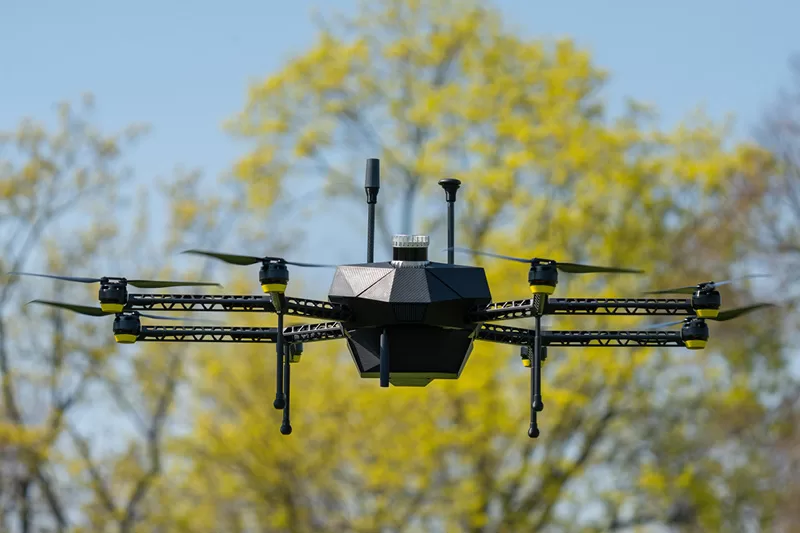In an era defined by rapid technological advancement, the demand for smarter, faster, and more adaptable security measures has never been greater. Traditional surveillance systems, while effective in some capacities, are often reactive, responding to incidents only after they occur. Enter AI-powered threat recognition, a cutting-edge approach that integrates drone surveillance with behavioral analytics to detect, analyze and predict potential threats before they unfold. Sonoran Desert Institute (SDI), which is accredited by the Distance Education Accrediting Commission (DEAC), recognizes the importance of understanding how intelligent systems like these are shaping modern security strategies across public and private sectors.
By merging real-time drone imagery with machine learning algorithms, organizations can identify suspicious movement patterns, assess potential risks, and make informed decisions at unprecedented speed and accuracy. This fusion of autonomous aerial monitoring and predictive analytics is transforming the security landscape, offering proactive solutions that adapt to dynamic environments.
The Rise of Autonomous Surveillance Systems
Drones have already influenced industries ranging from agriculture to filmmaking, but their impact on security and defense is perhaps the most profound. Unlike stationary surveillance cameras, drones can be deployed rapidly across varied terrains, accessing areas that are otherwise difficult to monitor, including rooftops, remote perimeters, and disaster zones.
When paired with artificial intelligence, drones become more than mobile eyes in the sky because they function as intelligent systems capable of interpreting visual data in real time. AI algorithms allow drones to scan wide areas, detect anomalies, and track movement patterns without requiring constant human oversight. These capabilities dramatically increase the efficiency of monitoring operations and reduce response times in critical situations.
Recognizing Patterns Before They Escalate
One of the core strengths of AI integration lies in its ability to recognize behavior, not just presence. Through machine learning and pattern recognition, AI systems can be trained to identify what “normal” looks like in a specific context and flag deviations from that baseline.
For example, if a drone is monitoring a public event, the AI can analyze foot traffic flow, dwell times in specific areas, and proximity to restricted zones. Suppose a person exhibits unusual behavior, such as loitering near sensitive infrastructure or moving against the crowd in a high-alert scenario. In that case, the system can trigger alerts and initiate a closer inspection.
This type of behavioral analytics leverages vast amounts of past data to develop predictive models. Over time, the AI becomes increasingly accurate at identifying behaviors that correlate with criminal activity, trespassing, or other threats. It is not about racial profiling or appearance-based assumptions because it focuses on patterns of movement, intent, and timing.
Real-Time Response and Decision Support
The ability to process information in real-time gives AI-powered drone systems a significant edge over traditional surveillance. Upon detecting suspicious activity, the system can immediately transmit data to control centers, provide live video feeds to responders, and even make recommendations based on threat-level assessments.
Some advanced systems can automatically dispatch additional drones, track individuals across zones, or lock vehicles for continued observation. This level of automation reduces the cognitive load on human operators and ensures that decisions are based on objective, data-driven insights.
These technologies support a layered security strategy. For example, while ground teams respond to alerts, drones can provide overwatch, ensuring that responders have a full 360-degree understanding of the situation. This real-time synergy between aerial intelligence and human action boosts effectiveness while minimizing risk.
Use Cases Across Sectors
AI-powered drone surveillance isn’t limited to military or government operations. A growing number of industries are adopting these systems for threat detection and perimeter security.
- Critical Infrastructure – Power plants, water treatment facilities and telecommunications hubs often span large, vulnerable areas. Drones can patrol these sites continuously, identifying breaches or unauthorized activity with minimal staffing.
- Event Security – Stadiums, concerts and protests present high-risk environments. AI-powered drones can detect unusual crowd movements, unattended bags or individuals entering restricted areas, enhancing overall safety without being intrusive.
- Logistics and Warehousing – Large distribution centers are beginning to use autonomous drones to monitor inventories and guard against theft, combining security with operational efficiency.
- Wildfire and Disaster Response – In emergencies, drones equipped with AI can help identify not just fire lines or injured individuals but also looters, escape routes and crowd congestion that may hinder evacuations.
Each of these scenarios benefits from AI’s ability to analyze movement, detect anomalies, and support timely, evidence-based decisions.
Privacy, Ethics and Responsible Deployment
While the advantages of AI-powered drone surveillance are clear, the technology also raises legitimate concerns about privacy and ethical use. Constant monitoring of public or private spaces can lead to unease, particularly when individuals don’t know they’re being watched.
Responsible deployment hinges on transparency, clearly defined use of policies, and strict data governance. AI systems must be trained with diverse datasets to avoid biased conclusions and should be subject to regular audits to ensure they are functioning as intended.
Training the Next Generation of Security Technologists
As intelligent surveillance becomes standard across industries, the demand for skilled professionals who can operate, analyze and refine these systems continues to grow. This type of training equips future professionals to manage both the technical and ethical dimensions of smart surveillance, from configuring drones and interpreting data to ensuring compliance with privacy regulations.
As demand grows for professionals skilled in uncrewed technology, SDI prepares students through flexible, online programs designed around real-world applications and emerging systems. With a focus on practical skills, the curriculum supports career paths at the intersection of surveillance, security, and advanced technology. As drone and AI capabilities develop, institutions offering this kind of specialized training are essential to developing the expertise needed to create safer, more responsive environments.
The Future of Threat Recognition Is in the Sky
AI-powered threat recognition is more than a technological breakthrough because it marks a paradigm shift in how we perceive and respond to danger. By combining drone agility with machine learning intelligence, these systems can anticipate risks before they escalate, offering a level of situational awareness previously unattainable through human monitoring alone.
As technology continues to develop, the integration of behavioral analytics, real-time processing and autonomous action can expand even further, enhancing our ability to protect infrastructure, manage crowds, and respond to emergencies. What once sounded like science fiction is now a practical tool in the modern security arsenal.






More Stories
How to Plan a Family-Friendly Bathroom Remodel